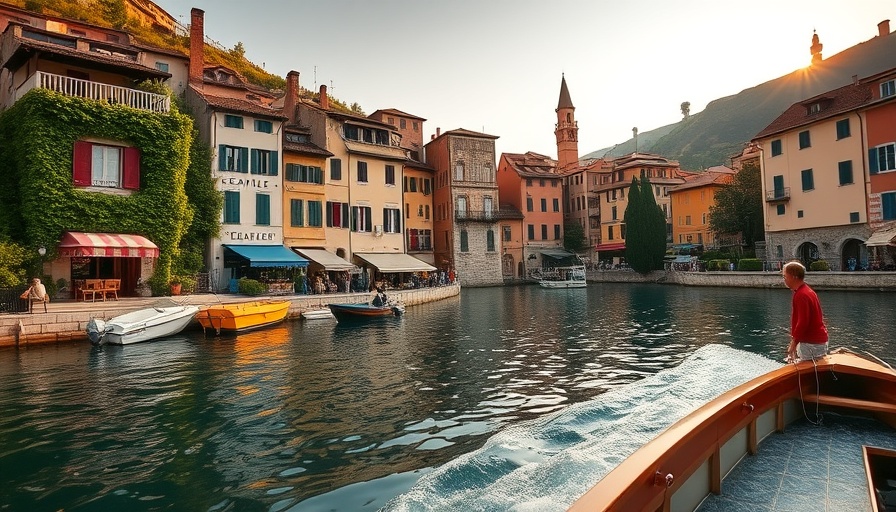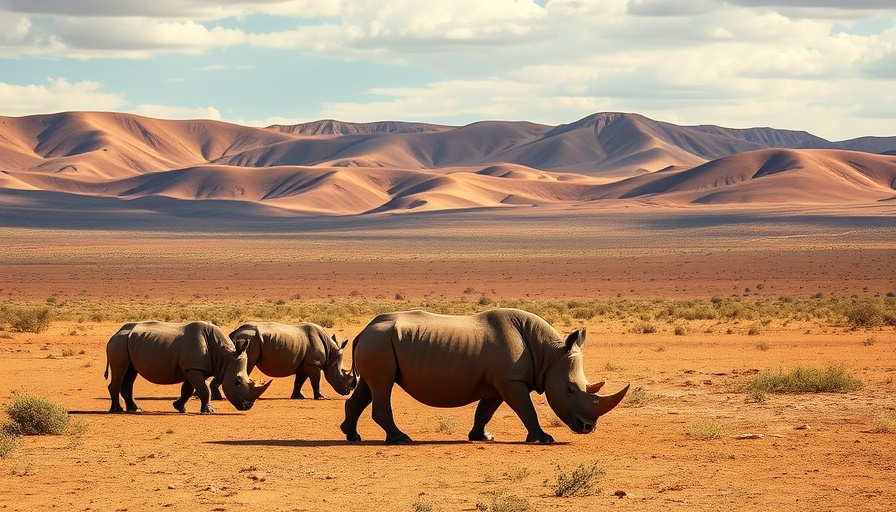
What Is Orienteering and Why Is It Gaining Popularity?
As reality television continues to shape travel trends, orienteering is emerging as an appealing option for adventurous souls. But what exactly is orienteering? At its core, it is a competitive navigation sport where participants use maps and compasses to navigate from point to point in diverse terrains. This activity, which made its debut in Scandinavia as a military training exercise, has evolved over the years, making its way into the hearts of outdoor enthusiasts globally.
The Impact of 'Race Across the World'
The success of the BBC's 'Race Across the World' TV series has undoubtedly contributed to the growing interest in orienteering. This show takes participants through various countries, challenging them to reach checkpoints without smartphones, relying solely on their navigational skills and teamwork. It resonates with viewers on multiple levels—emotionally and intellectually—as they witness individual resilience and group dynamics unfold under challenging circumstances.
A Historical Perspective
Orienteering's birth in Norway dates back to the early 20th century. It was initially utilized by military personnel to hone their navigation skills. The inclusion of civilian competitors began to emerge more significantly after World War II, with a particular boom in the sport during the 1960s and 1970s. With the 'right to roam' legislation in regions like Sweden and Norway, outdoor activities received a legal and social boost, allowing residents to explore natural landscapes freely. This cultural shift laid the groundwork for orienteering as a public pastime.
The Unique Appeal of Orienteering
What sets orienteering apart from other outdoor activities? It offers a blend of physical challenge, mental acuity, and nature immersion. Unlike traditional hiking or cycling, which primarily focuses on scenery or speed, orienteering challenges participants to engage with their surroundings in a profound way, sharpening their decision-making skills and problem-solving abilities in real-time.
Future Predictions: Will Orienteering Become the Next Big Travel Trend?
As international travel restrictions continue to ease and outdoor activities regain popularity, experts predict that orienteering could experience a significant resurgence. The combination of a global pandemic-sparked desire for self-sufficiency and the rise of adventure tourism suggests that travelers are seeking more immersive, active experiences. Orienteering fits perfectly within this paradigm, as it allows individuals to engage not only with nature but also with local cultures through exploration.
Community and Connection in Orienteering
Another aspect that enhances the appeal of orienteering is the sense of community and belonging it cultivates. Many orienteering groups and clubs exist around the world, providing opportunities for networking and socializing among enthusiasts. These clubs often organize local events and contests, making it easy for newcomers to join, learn, and become part of the community. This social connection is especially valuable in today's world, where human interaction is vital.
Resilience Through Adventure
Orienteering is not just a sport; it is a way to cultivate resilience, adaptability, and teamwork. Participants soon learn that getting lost is not the end of the journey but rather an opportunity to explore uncharted territories. This mindset encourages personal growth, allowing individuals to develop skills that are beneficial both during the event and in everyday life.
Accessibility of Orienteering
One of the beautiful aspects of orienteering is its accessibility. You don't need to be a seasoned athlete to start; it's about exploration and fun. Many local clubs offer beginner courses and resources, making it an inviting option for people of all ages and abilities. Equipment is minimal, typically just a map and compass, and as such, participants can venture into the wild without excessive costs. This affordability and ease of entry could make orienteering an even more prominent choice for travelers looking for authentic experiences.
Conclusion: Navigating the Future of Travel
As orienteering rises in popularity, travelers are encouraged to embrace the challenge it offers. There is so much value in wandering off the beaten path, reconnecting with nature, and engaging with communities along the way. Perhaps the next time you consider your travel plans, you might want to consider adding an orienteering experience into the mix, transforming adventure into an enriching journey of self-discovery.
 Add Row
Add Row  Add
Add 



Write A Comment